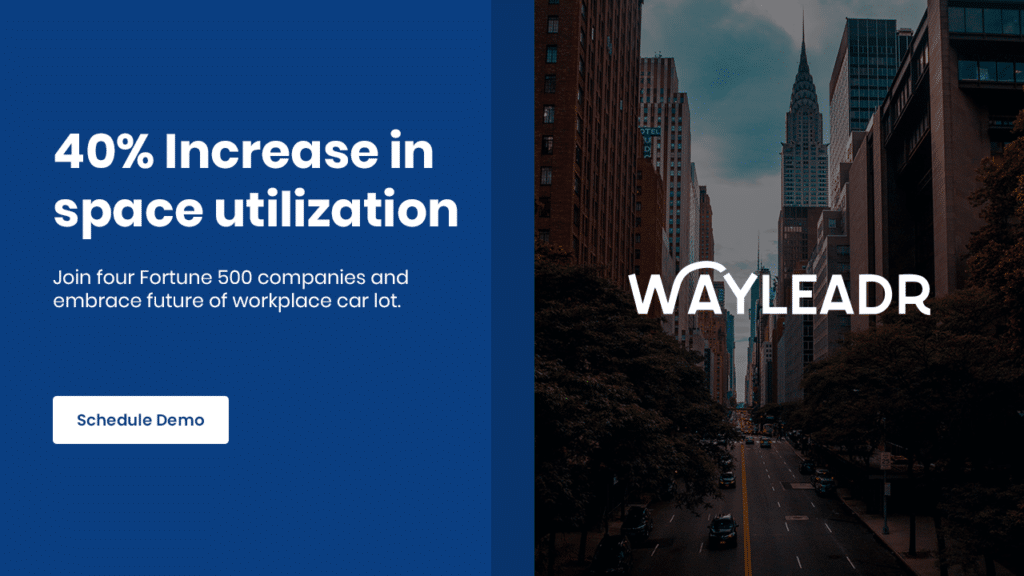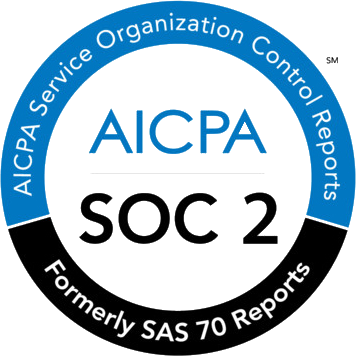La falta de plazas de aparcamiento puede causar graves problemas a los empresarios. Todos hemos tenido la desgracia de trabajar en un lugar donde el aparcamiento ha sido una pesadilla. He aquí una sencilla guía para gestionar la falta de plazas de aparcamiento en su empresa.

En primer lugar, veamos por qué la falta de plazas de aparcamiento es un reto para los empresarios. En un entorno de contratación competitivo, es fundamental garantizar una experiencia moderna en el lugar de trabajo. A menudo, el aparcamiento se considera una necesidad para muchos empleados. Sobre todo para los que tienen familias jóvenes o viven lejos de la oficina.
“Tradicionalmente, las empresas han tenido muchas plazas de aparcamiento. A medida que nuestras ciudades crecen, el espacio es más escaso que nunca. Los problemas de aparcamiento en el trabajo pueden causar muchos problemas, desde el estrés de los empleados hasta el exceso de emisiones.”
De hecho, el 23% de los empleados ha dejado un trabajo en algún momento de su carrera porque el desplazamiento era demasiado difícil.
Table of Contents
Toggle1. Software de gestión de aparcamientos
Empecemos por la mejor opción. Durante mucho tiempo, la gestión del aparcamiento ha sido un problema para los empresarios. En los últimos años ha surgido un nuevo y emocionante sector: el software de gestión de aparcamientos para empleados.
El software de gestión de aparcamientos para empleados hace exactamente lo que dice en la lata. Los innovadores y emprendedores que han reconocido los problemas que el aparcamiento plantea a los empresarios y a los empleados han desarrollado soluciones de primera clase específicas para los problemas de aparcamiento de las grandes oficinas. Esto abre un nuevo mundo de posibilidades para los propietarios de empresas, directores de oficinas, gestores de instalaciones y profesionales de la experiencia en el lugar de trabajo.
La función principal de la mayoría de los programas de gestión de aparcamientos para empleados es su capacidad para aumentar la disponibilidad de los mismos. El líder del mercado, Wayleadr, puede aumentar el número de plazas de aparcamiento disponibles para los empleados hasta en un 40%.
¿Suena demasiado bien para ser verdad? ¿Cómo funciona?
“Hace tiempo que el aparcamiento está mal estructurado en los centros de trabajo. Las empresas con falta de espacio suelen dar prioridad al aparcamiento para el personal directivo. Sin embargo, el personal pasa mucho tiempo fuera de la oficina en reuniones, de vacaciones o trabajando desde casa.”
La revolución del trabajo desde casa catalizada por COVID-19 no hace más que ampliar esta situación. Con una plantilla tan fluida, ¿podrán las empresas permitirse tener grandes cantidades de aparcamiento vacías porque los titulares de las plazas designadas no están en la oficina? Mientras tanto, otros miembros de la plantilla pueden tener que recurrir a pagar por aparcar fuera de la oficina o tomar nerviosamente el transporte público.
El software de gestión del aparcamiento de los empleados controla quién debe estar en la oficina y cuándo. El software puede asignar sin problemas las plazas de aparcamiento a quienes vayan a estar en la oficina en un día determinado. Lo mejor es que usted puede indicarle al software cómo priorizar al personal. De este modo, se garantiza que los que más necesitan aparcar siempre tengan acceso a la plaza.
Otras grandes ventajas del software de gestión de aparcamientos para empleados son la solidez de los datos y los informes, la posibilidad de digitalizar el acceso al aparcamiento y el seguimiento del impacto medioambiental de los hábitos de desplazamiento de sus empleados.
2. Manual Management
Voy a decir que hay formas más fáciles de gestionar el aparcamiento de los empleados que el enfoque manual. En determinadas circunstancias, cuando los presupuestos son muy ajustados o cuando se tiene un aparcamiento muy pequeño, puede funcionar.
Hay muchas maneras de hacerlo. Se empieza por crear una forma en la que la gente pueda comunicar los días en los que no se utilizarán los espacios asignados. A la mayoría de las empresas les gusta hacerlo a través de WhatsApp, Slack o Excel. Los demás empleados tienden a ocupar los espacios libres por orden de llegada.
Hay que tener en cuenta que si se pretende gestionar más de unos 10 empleados compartiendo 5 espacios, esto se convertirá en un proceso muy oneroso de gestionar.
“Con frecuencia se oye a las empresas quejarse de que la gestión de una pequeña cantidad de plazas de aparcamiento se ha convertido en una pesadilla administrativa”.
Por si sirve de algo, a la mayoría de las empresas les conviene pagar la pequeña cuota por utilizar un software de gestión de aparcamientos.
3. Alquilar un espacio extra
Durante mucho tiempo este ha sido el enfoque por defecto de muchos empresarios. Su empresa no tiene suficiente espacio, así que seguramente la solución más fácil es encontrar más espacios. Hemos analizado este enfoque con mucho más detalle en otro blog, pero a continuación exponemos algunos de los puntos principales.
Encontrar un espacio extra para alquilar puede ser un reto. La mayoría de las zonas urbanas sufren un déficit de plazas de aparcamiento en alquiler. Esto significa que las plazas de aparcamiento disponibles o huérfanas se alquilan con una gran prima.
In any major global city you will spend hundreds of euros or dollars acquiring new spaces on monthly leases. It is advisable before you go down this route to investigate how employee parking management software can unlock additional availability for a fraction of the cost.
Si ya está al máximo y necesita espacio adicional, lo mejor es ponerse en contacto con su agente de alquiler de oficinas para ver si tienen espacios adicionales en sus libros. Por otra parte, en la mayoría de las grandes ciudades hay uno o dos pequeños agentes inmobiliarios especializados en aparcamientos para oficinas. Pregunte por ahí para encontrar al mejor agente de su zona.
4. Resolver el problema del aparcamiento de una vez por todas
Por supuesto, hay una forma de resolver el problema del aparcamiento de una vez por todas. Se trata de reducir o eliminar la necesidad de aparcamiento de los empleados. Aunque los desplazamientos a pie, en bicicleta y en transporte público tienen enormes ventajas, como se indica en los blogs enlazados, muchos empresarios señalan su frustración por la escasa utilización.
Hay un método probado para reducir drásticamente la cantidad de personal que va en coche al trabajo. La introducción de tarifas de aparcamiento para los empleados. Esto puede ser un tema muy político para muchos empresarios.
Sin embargo, si quiere reducir la cantidad de personal que va en coche al trabajo, ya sea por razones medioambientales o de costes, este método obtendrá los mejores resultados.
Los principales softwares de aparcamiento para empleados, como Wayleadr, permiten a las empresas automatizar los pagos de aparcamiento de los empleados. Una de las principales ventajas de una solución basada en software es la flexibilidad.
“Antes de COVID, los pagos de aparcamiento de los empleados solían ser pagos mensuales fijos. El enfoque cada vez más flexible del trabajo significa que la gente ya no trabaja desde la oficina a tiempo completo.”
Los empleadores pueden ahora desbloquear los pagos de aparcamiento flexibles en los que los empleados sólo pagan por aparcar los días que están en la oficina. Esto puede integrarse perfectamente con los softwares de prestaciones para viajeros, los softwares de nóminas y el software de control de acceso para garantizar una experiencia óptima para los empleados.
¿Problemas de aparcamiento? Únase a los líderes del sector de empresas como Sanofi, Indeed.com y CBRE, programe una demostración con Wayleadr.com hoy mismo y resuelva sus problemas de aparcamiento con un clic.





